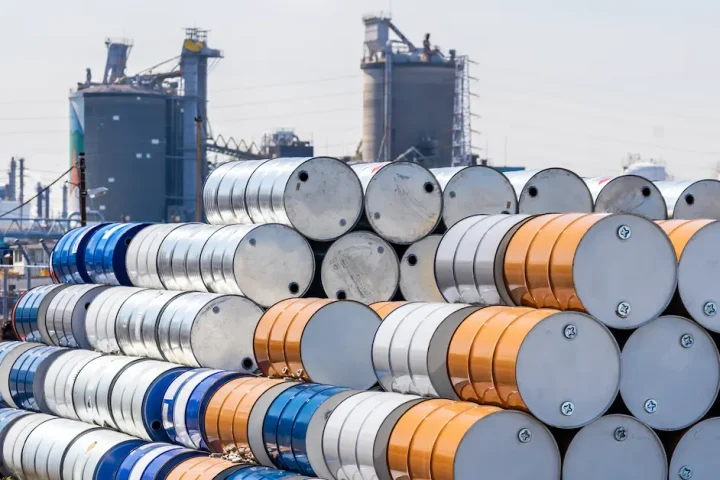.
Marcuard's Market update by GaveKal Dragonomics
By Cedric Gemehl
Last Wednesday (22/2/2017), the European Commission criticised Germany for its “persistently high current account surplus”. Berlin should take more steps to boost domestic demand in Germany, Brussels suggested, in order to trim its external surplus and to help the rest of the euro-area rebalance. It is hardly new advice, but the EC does not seem optimistic it will be heeded anytime soon. In the same release, it forecast that Germany’s current account surplus will remain above 8% of GDP for the next two years at least.
Yet behind the headline numbers, the internal distortions within the eurozone that built up in the years before the financial crisis are slowly being unwound. If the single currency area can successfully weather the upcoming electoral cycle in Europe, which remains the most likely case, the process of adjustment should continue.
Imbalances between Germany and the eurozone’s southern periphery began to build up from 1999, after Berlin struck a wage restraint deal with unions and employers in order to encourage jobs growth. Nominal labour costs were allowed to grow no faster than productivity—which kept German unit labour costs constant. Unemployment duly declined, but at the cost of constrained domestic demand growth.
 The newly-instituted European Central Bank responded to weak German demand by keeping interest rates low. In turn, low rates coupled with heavy capital inflows from the eurozone’s core fuelled a boom in the countries of the area’s southern periphery. Domestic demand and unit labour costs in southern Europe surged even as they remained supressed in Germany. The result was a marked gain in Germany’s competitiveness relative to the south, and the build-up of large bilateral deficits between the peripheral countries and Germany.
The newly-instituted European Central Bank responded to weak German demand by keeping interest rates low. In turn, low rates coupled with heavy capital inflows from the eurozone’s core fuelled a boom in the countries of the area’s southern periphery. Domestic demand and unit labour costs in southern Europe surged even as they remained supressed in Germany. The result was a marked gain in Germany’s competitiveness relative to the south, and the build-up of large bilateral deficits between the peripheral countries and Germany.
However, from 2009 onwards, a gradual internal rebalancing has been taking place in the eurozone. Southern Europe has borne much of the adjustment, and done it the hard way: through collapsing domestic demand, soaring unemployment and falling wage growth. But part of the adjustment has also occurred in Germany, with an end to such strict wage restraint. As wage rises have outstripped productivity growth, there has been a sustained rise in German unit labor costs. As a result, roughly half of the cost competitiveness advantage which Germany accumulated relative to southern Europe over the ten years to 2009 has now been whittled away.
At the same time, more rapid wage growth has boosted German domestic demand, which is now once again as strong relative to southern Europe as it was before the introduction of the euro. Granted, Germany continues to run an overall current account surplus equal to 8.7% of GDP. Thanks to the -20% trade-weighted depreciation of the euro since the financial crisis, Germany’s competitive position relative to the rest of the world has strengthened considerably. But its trade surplus with southern Europe has fallen by -50%.
Barring a politically-driven break-up of the euro, the adjustment should continue. In Southern Europe, unit labour costs will be held down by high unemployment. With the EC forecasting jobless rates two years hence at 11% in Italy and 16% in Spain, there is little chance wage growth will accelerate beyond the 0.5% that has capped gains for the last two years.
Conversely in Germany, a record low unemployment rate of 4.1% is supporting wage growth of 2.5%, which is faster than productivity growth. As a result, unit labour costs will continue to rise, further eroding Germany’s competitive position relative to southern Europe.
The adjustment is be a slow process, and indeed it has even gone slightly into reverse over the last two years as reviving demand in southern Europe has pushed up Germany’s surplus with the periphery once again. However, rebalancing may acquire renewed momentum following the selection of Martin Schulz as the candidate of Germany’s SPD social democratic party for the chancellorship ahead of September’s general election. In an effort to distance himself from incumbent Angela Merkel, Schulz is hinting that as chancellor he would roll back Germany’s labour market reforms of the 2000s, as well as take steps to increase public investment and boost domestic demand.
It’s a message that seems to resonate with SPD supporters. In recent days, the SPD has overtaken Merkel’s Christian Democrats in the polls. Of course, the election remains seven months away. Nevertheless, Schulz has successfully steered the debate towards policies that would reduce Germany’s external surplus and further the euro-area’s gradual internal rebalancing. If other politicians now shift their own positions in accord, the upshot might be a less competitive Germany, but it will also be a stronger and more cohesive eurozone.







